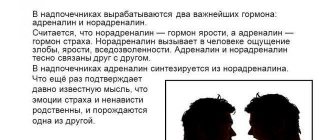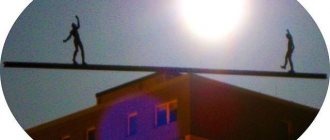The diagnosis of vegetative-vascular dystonia, unrecognized in most countries, which is accompanied by panic attacks, fear and anxiety for one’s life, occurs in 20% of patients.
Sudden attacks are more common in women and men between 25 and 35 years of age. Panic attacks during VSD are not uncommon in adolescents and elderly people after 50-60 years of age.
The lack of consensus on the origin of the disease and the diversity of symptoms of the disorder leads to the search for new, more improved methods for diagnosing and treating vegetative-vascular dysfunction.
What is a panic attack
According to the International Classification of Common Diseases, dystonia is considered to be a disruption of the autonomic nervous system and vascular damage. To determine why panic attacks may occur, it is necessary to study in detail how the body works.
Thanks to the sensitive nerve trunks, information is transmitted to the brain, which controls human life and transmits the appropriate commands for this. But the body’s needs are regulated by the autonomic part of the central nervous system, the sympathetic part of which accelerates all processes, and the parasympathetic part weakens it.
For example, dilation or contraction of pupils and blood vessels, increase or decrease in muscle tone and blood pressure, mobility of the excretory system or its inhibition.
Under the influence of strong emotions, the somatic, vegetative-vascular system fails. A person tries to restrain anger, worries or laughter, which ultimately leads to serious disorders. The sympathetic and parasympathetic departments begin to work simultaneously, and the brain is unable to understand the nerve impulses through which information passes.
As a result of an incorrectly made decision by the main organ of the central nervous system, a panic disorder occurs in the body, which precedes the attack. It is always expressed quite clearly and unpredictably.
Preventive actions
To prevent panic attacks, you should take a walk in the fresh air every day. The best time for walking is morning. But if vegetative-vascular dystonia is accompanied by insomnia, then it is more beneficial to walk in the evening.
Also, the symptoms of VSD can be eliminated with the help of creativity. More recommended:
- embroider;
- paint;
- sculpt from clay.
Panic attacks, like other overreactions in the body, are susceptible to exhaustion if they are deprived of their substrate.
A strong urge to develop a panic attack is an excessive fear of death. It is known that believers do not have such fear, since their thoughts are occupied with something else: a person must enter the state of death in such a way as to appear before other spheres in a worthy form. This formulation eliminates the very meaning of a panic attack. Therefore, if no medicine works, faith and religious education will help a person.
What are panic attacks?
Without a complete understanding of the origin of the disease, in medical practice vegetative attacks are classified differently. Depending on the time of manifestation, there are morning, daytime and night-time panic attacks, which occur from 2 to 4 am.
If there is a specific source that caused anxiety, or a reason, other types of panic attacks with VSD are distinguished:
- spontaneous. Comes suddenly;
- situational. Accompanies strong emotions or stress;
- conditional-situational. Provoking factors are psychotropic substances, alcohol, smoking, potent medications;
- mixed. Unexplained reason.
Vegetative-vascular dystonia is also considered after diagnostics.
In this case, VSD syndrome with panic attacks is classified from a medical point of view, which is characterized by the causes of the attack:
- autonomic failures of the nervous system;
- affective disorders of consciousness;
- consequences of any phobia;
- result of hyperventilation.
At the initial appointment, pronounced symptoms of panic attacks are also noted by the attending physician. They may be consequences of existing vascular diseases.
When diagnosed with VSD, the following types of attacks exist:
- hypotonic;
- hypertensive;
- mixed.
The above signs will be taken into account in the further treatment of the patient for VSD. There are enough ways and methods for this.
Causes
An important role in any disease is played by physiological processes occurring in the body.
With VSD, panic attacks in 15% of cases occur due to a hereditary factor.
This partly explains why everyone's tolerance to stress varies.
People with hypersensitivity and nervous system disorders are prone to panic and depression. Suspiciousness and exaggeration of one’s feelings affects not only the psyche, but also health.
Psychologists and psychotherapists argue that panic is a symptom of an internal personality conflict. Secret desires, overcoming one’s own fears, suppressing emotions are the main causes of a vegetative attack.
Chronic diseases of the endocrine system and musculoskeletal system, heart problems and age-related hormonal changes, which are especially common in women, provoke VSD and panic attacks. Deterioration in the performance of one organ certainly leads to disruption of the activity of another.
Characteristic
PAs are repeated both at the psychological and physical levels, accompanied by severe symptoms. They occur in both men and women, but more often women suffer from painful symptoms. Age doesn't matter. Perhaps, only with a decrease in background hormonal tension in the postmenopausal period does the severity, intensity and frequency of panic attacks decrease.
Panic attacks are different from the specific symptoms of obsessive-compulsive disorder. With OCD, a person is depressed by the idea that he is slowly losing control of himself or will soon die, and there is also a fear of suicide.
Anxiety attacks can be spontaneous and situational:
- In the first case, attacks appear for no apparent reason.
- The second type of PA is provoked by phobias.
- People dependent on alcohol, tobacco or medications experience conditional attacks.
Psychiatrists and specialists in the field of borderline states who work in the neurosis clinic understand these subtleties.
Signs of a panic attack
Suddenness, perhaps, best characterizes a vegetative attack. A sharp release of adrenaline provokes vasoconstriction, accelerated heartbeat, increased pulse and changes in blood composition. Similar to VSD, the symptoms of a panic attack subsequently appear.
Hot flashes and cold flashes are accompanied by constriction and dilation of blood vessels, which leads to impaired heart contractions and surges in blood pressure. These processes are the first signs that a panic attack has occurred during VSD, which will lead to further somatic disorders.
Most patients experience irritable bowel syndrome, vomiting and nausea, increased activity of the urinary system, deterioration of the salivary glands and a feeling of dry mouth.
Physiologically active substances, catecholamines, which are synthesized in the medulla, enter the blood in large quantities, where they reduce the amount of carbon dioxide. But not everyone knows how vegetative-vascular dystonia manifests itself with panic attacks under the influence of adrenaline.
Although symptoms such as dizziness, migraine, numbness of the limbs and fainting are regularly encountered by all people suffering from VSD without exception.
A person’s excitement and anxiety grows, and the fear of dying appears. Possible loss of vision, voice and hearing, clouding of consciousness. All these are mental consequences of the disease. Fear for your health at night leads to poor sleep and insomnia, which makes the situation even worse.
What contributes to the occurrence of the disease?
Acute and chronic stress
Just as grain germinates when it lands on favorable soil, so vegetative-vascular dystonia occurs in patients who have “prepared” all the conditions for its development. There are factors, as well as personal characteristics, that in most cases are predisposing to the development of pathology. They are very numerous:
- acute and chronic stress, neurosis, alcohol and nicotine intoxication,
- fatigue, both mental and physical,
- traumatic brain injury,
- hormonal disorders in adolescence and adulthood,
- psychological characteristics (lack of self-confidence and strength, fears, anxiety, pessimism, tendency to depression),
- lack of work and rest schedule (lack of sleep, lack of sleep at night, physical inactivity, lack of vacation for many years in a row, living and working in conditions of constant noise).
One or more factors in combination can become a trigger, a “starter” in the development of pathology. Under the influence of these factors, the regulation of the cardiovascular and other body systems occurs, primarily at the level of the cerebral cortex and higher regulatory centers.
Methods for treating a panic attack
Only a specialist can assess the severity of a vegetative-vascular disorder. It is better to contact a psychologist, psychotherapist, cardiologist and neurologist, who will draw up a course on how to cure VSD and overcome panic fear of reality, and select effective medications and antidepressants.
To prevent an attack, treatment begins with physiotherapeutic procedures. Be sure to attend a relaxing massage of the back and neck, as with a diagnosis of VSD.
Specialists must teach each patient to breathe correctly before an approaching attack. The basis of the exercise is a short inhalation using the abdomen and a long exhalation. It is recommended to regulate the air with a paper bag or palms.
A contrast shower is carried out with alternating cold and warm water with a difference of 20-30 seconds. During the procedure, be sure to massage your earlobes, thumbs and little fingers, and perform massage movements to avoid numbness of the limbs.
Psychotherapy and hypnosis for panic attacks
Without the help of a psychologist and psychotherapist, it is impossible to fully treat VSD and panic attacks.
Attending sessions and conducting appropriate conversations with a specialist will teach people with VSD to relax and control their emotions without drugs. Let's consider the main methods of psychotherapy for stress and depression that provoke vegetative-vascular disorders.
The preliminary or general procedure involves studying the patient’s life and the factors that influence the anxiety state. If you have mental or nervous system diseases, it is important to inform your doctor.
The essence of cognitive behavioral therapy is to deliberately create imaginary situations that are dangerous for a person. The specialist is obliged to teach the patient the practice of independently solving problems and mastering relaxation techniques.
Person-centered practice helps to uncover the underlying psychological processes that lead to internal conflict.
The most effective is group psychotherapy. Using the example of people who are successfully treated and those who have already overcome VSD, it is easier to instill confidence in the patient for a speedy recovery.
A family meeting with a psychologist or psychotherapist is no less important. The closest relatives should support the patient and motivate him to think positively. The role of the specialist, in this case, is to teach family members the correct behavior and assistance during a panic attack, daily repeating the words: “we will cure”, “recovery” and “I can”.
Subconscious influence on the patient is carried out through hypnosis. It is used in cases of severe forms of the disease or congenital predisposition to it.
Medicines for VSD and panic attacks
After a preliminary examination and preparation of the patient, the doctor has the right to write a prescription, which will indicate how to treat autonomic dysfunction using drugs for VSD and panic attacks.
The use of antidepressants such as Spitomin, Deprim Forte and Cipralex has a sedative effect, increases the rate of excitation of dopamine neurons, improves mood, and activates mental and physical performance.
You can reduce anxiety and mental stress with sedatives such as Novo-Passit and Motherwort forte.
“Phenorelaxan”, “Relium” and “Betamax” are tranquilizers that suppress the excitation of the centers of the nervous system, have a hypnotic effect, and reduce symptoms of neurotic origin. They participate in the processes of inhibition of motor nerves and weakening of muscle tone.
Drug treatment
Coping with terrible panic attacks can sometimes be done with the help of pills.
It is recommended to treat a panic attack with the following list of medications:
Sedative medications:
Validol
Novo-passit
Motherwort tincture
Valerian tincture
Tranquilizers:
Beta blockers:
Important! It is not recommended to purchase, let alone take, medications to stop a panic attack on your own without a doctor’s prescription. Since the consequences can be unpredictable, and medications can cause mental disorders. Treatment can be carried out independently, but only after consulting a specialist.











